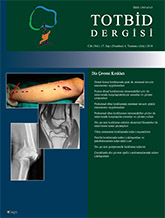
Although tibial eminence fractures are mostly seen in childhood and adolescents, it may also be seen in adulthood. X-rays are usually enough for the diagnosis. However, MRI and CT scan can be done for the associated injuries, and where the X-ray is not sufficient. Most common used classification is described by Meyers and McKeever. Nowadays, almost all of the type 1 fractures are treated conservatively. However, there is no consensus in the treatment of type 2 fractures. Almost all type 3 and 4 fractures are treated surgically. Arthroscopy was seen only as a diagnostic tool in most of the papers published before 2000`s, but nowadays most of the eminence fractures are treated with arthroscopic techniques. Although eminence fractures are rarely seen, the incidence is increasing because of increasing sports activities in childhood and adolescents. Anatomic reduction of the fracture, protection of the integrity and length of the anterior cruciate ligament, and stable internal fixation are the most important parameters that affect prognosis.